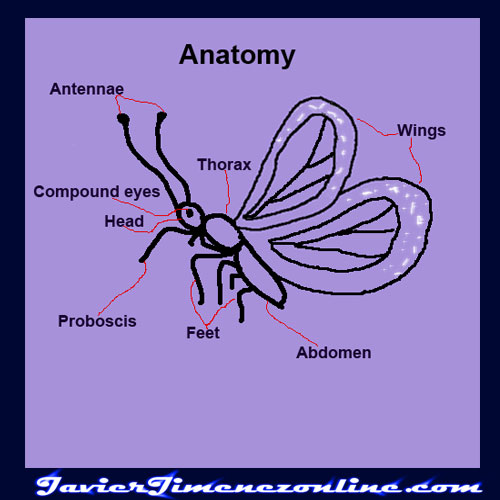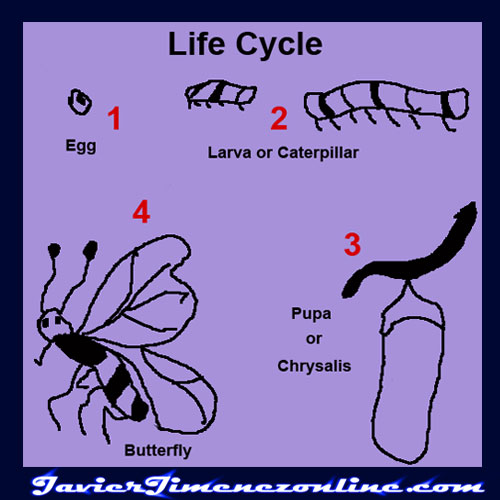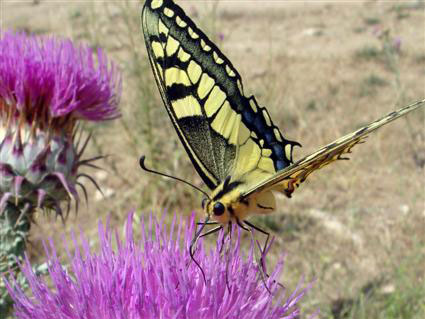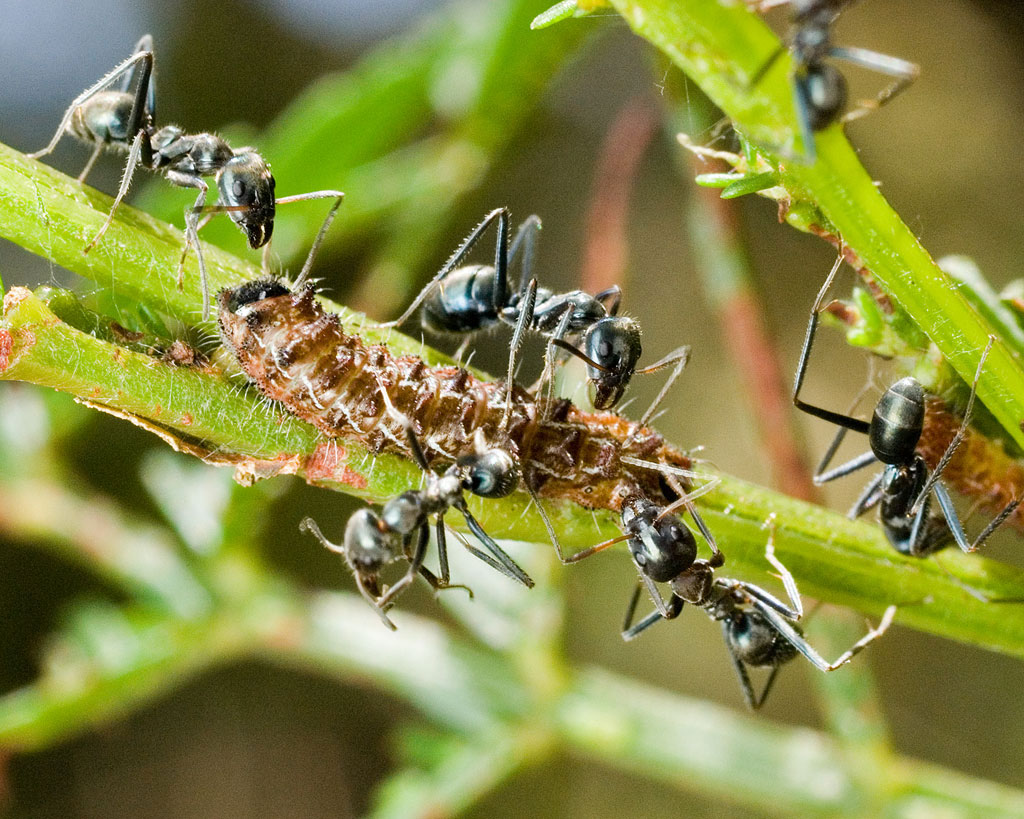












They have six jointed feet, a pair of antennae, four scaly wings, compound eyes, and three body parts. These body parts are the head, the thorax, and the abdomen.
The body of the butterfly has very small sensory hairs. The legs and the wings are attached to the thorax. Also, the thorax has muscles that help the wings and feet to move.
Butterflies use their feet to taste and the antennae to smell. Butterflies have a nervous system which is located it in the thorax. Butterflies have at the end of the antennae a small club like a swollen tip.

Butterflies go through a metamorphosis. This metamorphosis consists of four life stages.
The first stage is when the female butterfly lays the eggs on a leaf.
The second stage occurs when a larva or caterpillar hatches from the egg. This larva would eat leaves or flowers, and would lose its skin many times as it grows. The larva attaches itself to a twig and forms a chrysalis or a hard shell pupa.
The third stage is the transformation stage where the larva changes to a butterfly.
The final stage is when the butterfly emerges from the pupa and the butterfly would continue the same life cycle. The whole life cycle of the butterfly lasts about two weeks.
Butterflies donít eat, they drink liquids. They use their proboscis or the tiny tube that is in their mouth.
Butterflies perch on flowers and fruits to extract the nectar or juice, and they drink so much that they emit a fine liquid spray from the tip of their abdomen.

Butterflies as honeybees help in pollination, but butterflies donít communicate like honeybees do. Butterflies communicate with each other by color, sound, chemicals, and physical actions.
They use their color patterns and chemical pheromones to attract the opposite sex.
Butterflies make clicking sounds. These sounds are used to protect their space. Some species of larva or caterpillar produce sugary substances for ants, so the ants can protect the larva from predators.
